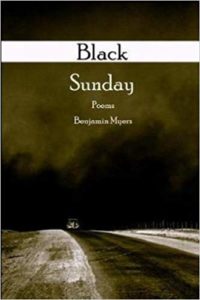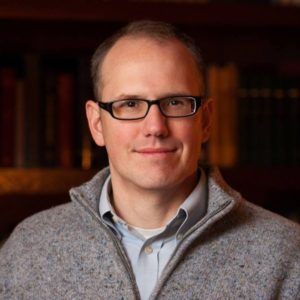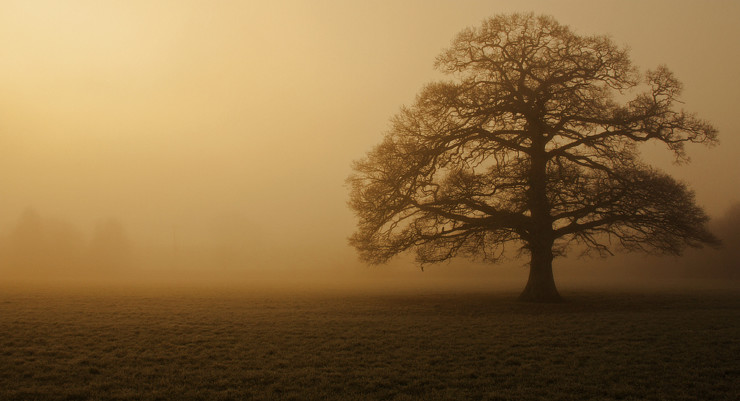It began as a drought. Farmers in 1930 looked up at the sky and wondered where the clouds had gone, and with them, the rain. For an area the size of three-fourths of the state of Texas, including the Texas and Oklahoma panhandles, the western half of Kansas, the eastern half of Colorado, and parts of Nebraska and New Mexico, the rain wouldn’t return until 1939. At times, most of the United States was affected by the drought, but no region experienced what the southern Plains went through.
The land dried up. The wind blew. Dust storms reached the East Coast. By the end of the 1930s, some 2.5 million people had migrated west to escape what came to be called the Dust Bowl. It was the agricultural counterpoint to the Great Depression, and it was part of an era when hunger became familiar to millions of Americans.
Poet Benjamin Myers uses the 54 poems of Black Sunday to explain, interpret, and illustrate what happened in those years. You read these poems in somber stillness. You look out your window and consider what your own landscape would be with grass dead, gardens parched into sticks, the limbs of trees reaching upward like unanswered prayers.
Myers uses the voices of six fictional characters to tell the Dust Bowl story in poetry. Will Burns is a farmer in the Oklahoma Panhandle who remains throughout the entire period. His wife Lily has her own perspective. Louise Burns is their daughter, speaking long after the drought has passed but remembering what it was like to be a child. Ms. Manvel is the teacher watching her class diminish one by one as families leave. The Reverend is the local Presbyterian minister, who will be tending the grave of his wife when he’s caught in a dust storm. And Henry is the town drunk. Together, these six people will tell us what happened, using their own stories and experiences.
Read the hopelessness in the voice of farmer Will Burns.
Will Burns on the Great American Desert

and all it’s ever going to be. The land
ain’t ours. Blowing over itself, the sand
will take it back. The rain follows the plow
men said, but then it didn’t rain. The cow,
the buffalo, Indian, and ranch hand
should have it back, and can, if they can stand
to live here now the dirt’s begun to blow.
But I ain’t got no place to go. I’ll stay
and let that mean old sun burn me new shades of brown.
I’ll let the blowing sand eat at my skin
until my outside layer’s blown away
and nothing’s left but muscle and raw bone.
I was a man, once. What will I be then?
In another poem, Lily describes the foreclosure auction on their farm, and how the neighbors will make sure no one except Will can bid mere pennies so he can keep his land. She will also describe trying to clean the dust from her child’s eyes. Will describes “Black Sunday,” when all you could see was dirt. In the final poem in the collection, the long and extraordinary “The Faith Healer,” a child is discovered with the gift of physical healing, and soon she and her family are overwhelmed by people seeking deliverance from afflictions.

Benjamin Myers
Myers, associate professor of literature and poetry writing at Oklahoma Baptist University, served as poet laureate of Oklahoma from 2015 to 2016. He is the author of two previous collections, Elegy for Trains (2011) and Lapse Americana (2013). Elegy for Trains won the Oklahoma Book Award for Poetry, and his work has been published in numerous literary journals. He received his B.A. degree from the University of the Ozarks and his M.A. and Ph.D. degrees in literature from Washington University in St. Louis.
Memories of the Dust Bowl have receded in American history. Telling the stories of the time and region in poetry, as Myers has done in Black Sunday, does more than remind us of a historical period and event. These poems bring a truth to what happened in ways that history books can’t.
Related:
Poetry Review: The Submerged Depths of Lapse Americana
The Dust Bowl: A Film by Ken Burns
PBS American Experience: Surviving the Dust Bowl
Photo by Marilyn Peddle, Creative Commons, via Flickr. Post by Glynn Young,author of Poetry at Work and the novels Dancing Priest, A Light Shining, Dancing King, and the recently published Dancing Prophet.
__________________________

“I require all our incoming poetry students—in the MFA I direct—to buy and read this book.”
—Jeanetta Calhoun Mish
- Longfellow’s “Paul Revere’s Ride”: Creating a National Legend - April 17, 2025
- Poets and Poems: Katie Kalisz and “Flu Season” - April 15, 2025
- Poets and Poems: Michelle Ortega and “When You Ask Me, Why Paris?” - April 10, 2025

Megan Willome says
Glynn, thank you for this. My west Texas farmer grandfather had stories about those years.
I heard Ben Myers read several years ago and did a breakout session with him. I’ve also become very interested in writers who use poetry to tell stories, as it seems he’s done here.
The only book I’ve read on the Dust Bowl is a Newbery Award-winner (also poetry), “Out of the Dust” by Karen Hesse. It’s a hard, good read. This one sounds like this one by Myers is in the same vein.
Glynn says
Megan, I’ve been discovering how much I enjoy poetic storytelling, or storytelling by poem. Myers’ use of the six voices add a richness and complexity to the overall story of the Dust Bowl.
Mary Sayler says
Thanks, Glynn. This could be an excellent example for members of our Christian Poets & Writers group on Facebook! i.e., Many like to write long poems, especially of their personal experiences of faith, but they might not have thought about carrying their unique testimony or its theme into a book-length poem.
Glynn says
The narrative poem has a long history — dating back to at least The Iliad. And some one third of the Old Testament of the Bible is written in poetic form. There’s something that binds the use of poetry and telling a story.
Maureen says
Narrative poetry goes all the way back to the ‘Epic of Gilgamesh’. Myers set himself the extra challenge of telling this particularly American story via persona poems. And what a story to tell!
Megan, have you read Sandra Steingraber’s ‘Post-Diagnosis’ or Bettina Judd’s ‘patient’? Both are wonderfully written stories in poetry. I reviewed the latter at Writing Without Paper. Mark Nepo’s ‘Surviving Has Made Me Crazy’ is another.
Maureen says
I also just realized Myers is using the sonnet form. He’s remarkable.
Megan Willome says
I noticed that too, Maureen. I keep spying his sonnets in un-sonnet-like realms.
No, I don’t know either of the books you mentioned, but this is definitely a form I’m into at the moment. I’ll check them out.
Leslie Moon Moseley says
Glynn And Maureen nice to see you again.
This book has given me an idea to use with our students in Uganda. There are so many stories they or their families have lived. Poetry carries more emotion than a paper or thesis.
Myers’ work attests to that.
Cheers
Leslie Moon (moonie)
Glynn says
Leslie – thanks for the note! Let us know if this works.